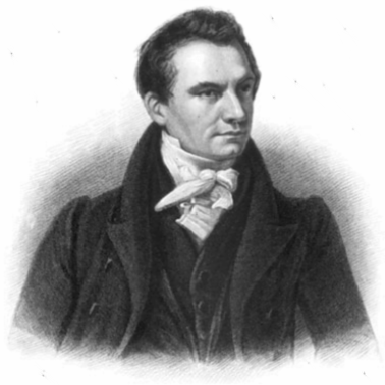|
Quotient Automaton
In computer science, in particular in formal language theory, a quotient automaton can be obtained from a given nondeterministic finite automaton by joining some of its states. The quotient recognizes a superset of the given automaton; in some cases, handled by the Myhill–Nerode theorem, both languages are equal. Formal definition A (nondeterministic) finite automaton is a quintuple ''A'' = ⟨''Σ'', ''S'', ''s''0, ''δ'', ''S''f⟩, where: * ''Σ'' is the input alphabet (a finite, non-empty set of symbols), * ''S'' is a finite, non-empty set of states, * ''s''0 is the initial state, an element of ''S'', * ''δ'' is the state-transition relation: ''δ'' ⊆ ''S'' × ''Σ'' × ''S'', and * ''S''f is the set of final states, a (possibly empty) subset of ''S''.Hopcroft and Ullman (sect.2.3, p.20) use a slightly deviating definition of ''δ'', viz. as a function from ''S'' × ''Σ'' to the power set of ''S''. A string ''a''1...''a''''n'' ∈ ''Σ'' * is recognized by ''A'' if ther ... [...More Info...] [...Related Items...] OR: [Wikipedia] [Google] [Baidu] |
Computer Science
Computer science is the study of computation, automation, and information. Computer science spans theoretical disciplines (such as algorithms, theory of computation, information theory, and automation) to practical disciplines (including the design and implementation of hardware and software). Computer science is generally considered an area of academic research and distinct from computer programming. Algorithms and data structures are central to computer science. The theory of computation concerns abstract models of computation and general classes of problems that can be solved using them. The fields of cryptography and computer security involve studying the means for secure communication and for preventing security vulnerabilities. Computer graphics and computational geometry address the generation of images. Programming language theory considers different ways to describe computational processes, and database theory concerns the management of repositories ... [...More Info...] [...Related Items...] OR: [Wikipedia] [Google] [Baidu] |
Formal Language
In logic, mathematics, computer science, and linguistics, a formal language consists of words whose letters are taken from an alphabet and are well-formed according to a specific set of rules. The alphabet of a formal language consists of symbols, letters, or tokens that concatenate into strings of the language. Each string concatenated from symbols of this alphabet is called a word, and the words that belong to a particular formal language are sometimes called ''well-formed words'' or '' well-formed formulas''. A formal language is often defined by means of a formal grammar such as a regular grammar or context-free grammar, which consists of its formation rules. In computer science, formal languages are used among others as the basis for defining the grammar of programming languages and formalized versions of subsets of natural languages in which the words of the language represent concepts that are associated with particular meanings or semantics. In computational com ... [...More Info...] [...Related Items...] OR: [Wikipedia] [Google] [Baidu] |
Quotient Group
A quotient group or factor group is a mathematical group obtained by aggregating similar elements of a larger group using an equivalence relation that preserves some of the group structure (the rest of the structure is "factored" out). For example, the cyclic group of addition modulo ''n'' can be obtained from the group of integers under addition by identifying elements that differ by a multiple of n and defining a group structure that operates on each such class (known as a congruence class) as a single entity. It is part of the mathematical field known as group theory. For a congruence relation on a group, the equivalence class of the identity element is always a normal subgroup of the original group, and the other equivalence classes are precisely the cosets of that normal subgroup. The resulting quotient is written G\,/\,N, where G is the original group and N is the normal subgroup. (This is pronounced G\bmod N, where \mbox is short for modulo.) Much of the importan ... [...More Info...] [...Related Items...] OR: [Wikipedia] [Google] [Baidu] |
Regular Expression
A regular expression (shortened as regex or regexp; sometimes referred to as rational expression) is a sequence of characters that specifies a search pattern in text. Usually such patterns are used by string-searching algorithms for "find" or "find and replace" operations on strings, or for input validation. Regular expression techniques are developed in theoretical computer science and formal language theory. The concept of regular expressions began in the 1950s, when the American mathematician Stephen Cole Kleene formalized the concept of a regular language. They came into common use with Unix text-processing utilities. Different syntaxes for writing regular expressions have existed since the 1980s, one being the POSIX standard and another, widely used, being the Perl syntax. Regular expressions are used in search engines, in search and replace dialogs of word processors and text editors, in text processing utilities such as sed and AWK, and in lexical ana ... [...More Info...] [...Related Items...] OR: [Wikipedia] [Google] [Baidu] |
Quotient Automaton A=b=c=d
In arithmetic, a quotient (from lat, quotiens 'how many times', pronounced ) is a quantity produced by the division of two numbers. The quotient has widespread use throughout mathematics, and is commonly referred to as the integer part of a division (in the case of Euclidean division), or as a fraction or a ratio (in the case of proper division). For example, when dividing 20 (the ''dividend'') by 3 (the ''divisor''), the ''quotient'' is "6 with a remainder of 2" in the Euclidean division sense, and 6\tfrac in the proper division sense. In the second sense, a quotient is simply the ratio of a dividend to its divisor. Notation The quotient is most frequently encountered as two numbers, or two variables, divided by a horizontal line. The words "dividend" and "divisor" refer to each individual part, while the word "quotient" refers to the whole. \dfrac \quad \begin & \leftarrow \text \\ & \leftarrow \text \end \Biggr \} \leftarrow \text Integer part definition The quo ... [...More Info...] [...Related Items...] OR: [Wikipedia] [Google] [Baidu] |
Regular Expression
A regular expression (shortened as regex or regexp; sometimes referred to as rational expression) is a sequence of characters that specifies a search pattern in text. Usually such patterns are used by string-searching algorithms for "find" or "find and replace" operations on strings, or for input validation. Regular expression techniques are developed in theoretical computer science and formal language theory. The concept of regular expressions began in the 1950s, when the American mathematician Stephen Cole Kleene formalized the concept of a regular language. They came into common use with Unix text-processing utilities. Different syntaxes for writing regular expressions have existed since the 1980s, one being the POSIX standard and another, widely used, being the Perl syntax. Regular expressions are used in search engines, in search and replace dialogs of word processors and text editors, in text processing utilities such as sed and AWK, and in lexical ana ... [...More Info...] [...Related Items...] OR: [Wikipedia] [Google] [Baidu] |
Nondeterministic Finite Automaton
In automata theory, a finite-state machine is called a deterministic finite automaton (DFA), if * each of its transitions is ''uniquely'' determined by its source state and input symbol, and * reading an input symbol is required for each state transition. A nondeterministic finite automaton (NFA), or nondeterministic finite-state machine, does not need to obey these restrictions. In particular, every DFA is also an NFA. Sometimes the term NFA is used in a narrower sense, referring to an NFA that is ''not'' a DFA, but not in this article. Using the subset construction algorithm, each NFA can be translated to an equivalent DFA; i.e., a DFA recognizing the same formal language. Like DFAs, NFAs only recognize regular languages. NFAs were introduced in 1959 by Michael O. Rabin and Dana Scott, who also showed their equivalence to DFAs. NFAs are used in the implementation of regular expressions: Thompson's construction is an algorithm for compiling a regular expression to an NFA ... [...More Info...] [...Related Items...] OR: [Wikipedia] [Google] [Baidu] |
Equivalence Class
In mathematics, when the elements of some set S have a notion of equivalence (formalized as an equivalence relation), then one may naturally split the set S into equivalence classes. These equivalence classes are constructed so that elements a and b belong to the same equivalence class if, and only if, they are equivalent. Formally, given a set S and an equivalence relation \,\sim\, on S, the of an element a in S, denoted by is the set \ of elements which are equivalent to a. It may be proven, from the defining properties of equivalence relations, that the equivalence classes form a partition of S. This partition—the set of equivalence classes—is sometimes called the quotient set or the quotient space of S by \,\sim\,, and is denoted by S / \sim. When the set S has some structure (such as a group operation or a topology) and the equivalence relation \,\sim\, is compatible with this structure, the quotient set often inherits a similar structure from its parent set. Ex ... [...More Info...] [...Related Items...] OR: [Wikipedia] [Google] [Baidu] |
Equivalence Relation
In mathematics, an equivalence relation is a binary relation that is reflexive, symmetric and transitive. The equipollence relation between line segments in geometry is a common example of an equivalence relation. Each equivalence relation provides a partition of the underlying set into disjoint equivalence classes. Two elements of the given set are equivalent to each other if and only if they belong to the same equivalence class. Notation Various notations are used in the literature to denote that two elements a and b of a set are equivalent with respect to an equivalence relation R; the most common are "a \sim b" and "", which are used when R is implicit, and variations of "a \sim_R b", "", or "" to specify R explicitly. Non-equivalence may be written "" or "a \not\equiv b". Definition A binary relation \,\sim\, on a set X is said to be an equivalence relation, if and only if it is reflexive, symmetric and transitive. That is, for all a, b, and c in X: * a \sim a ... [...More Info...] [...Related Items...] OR: [Wikipedia] [Google] [Baidu] |


